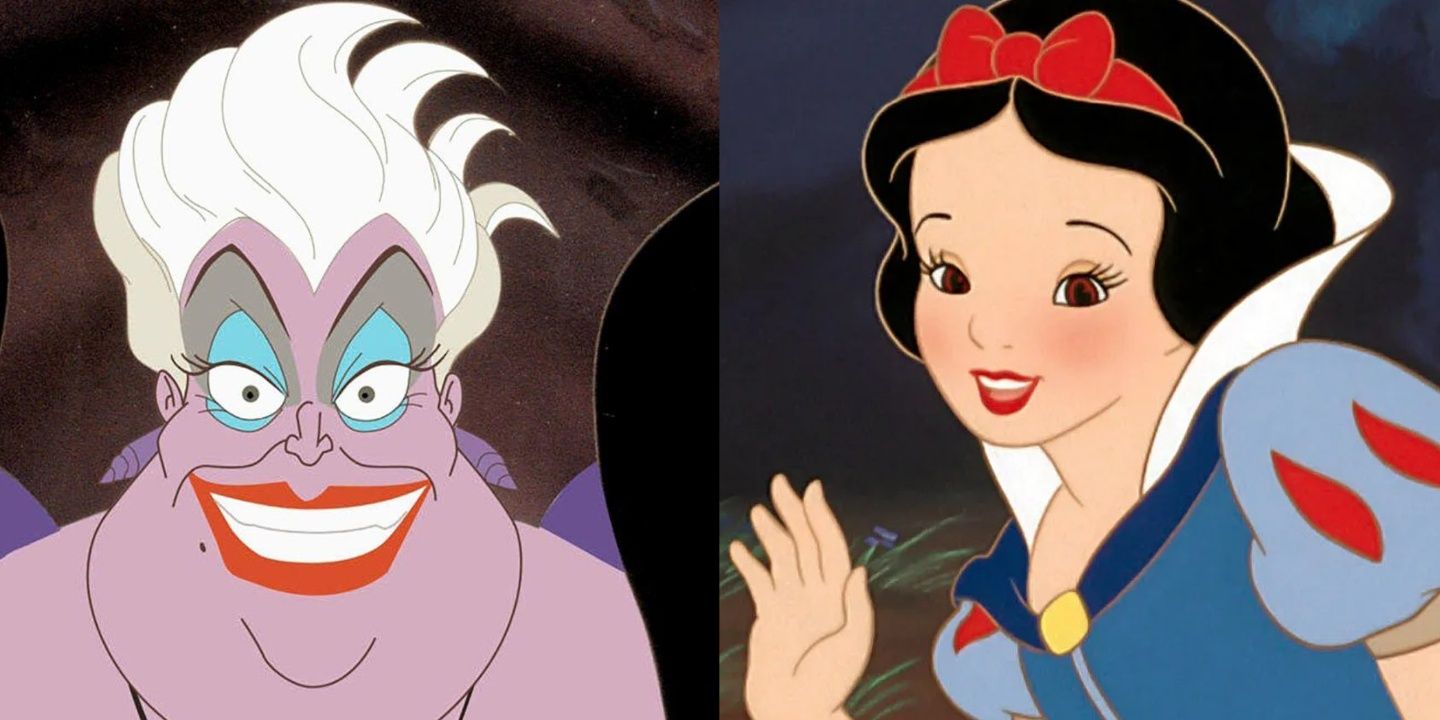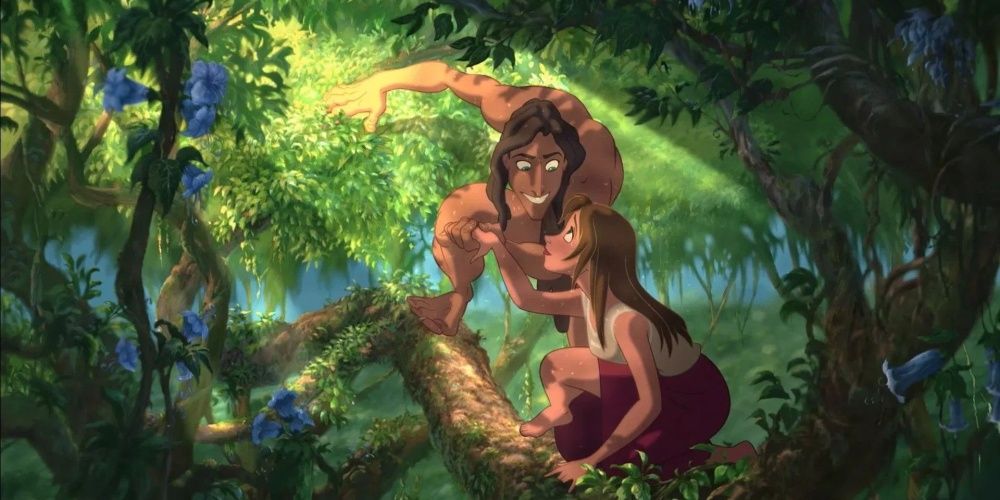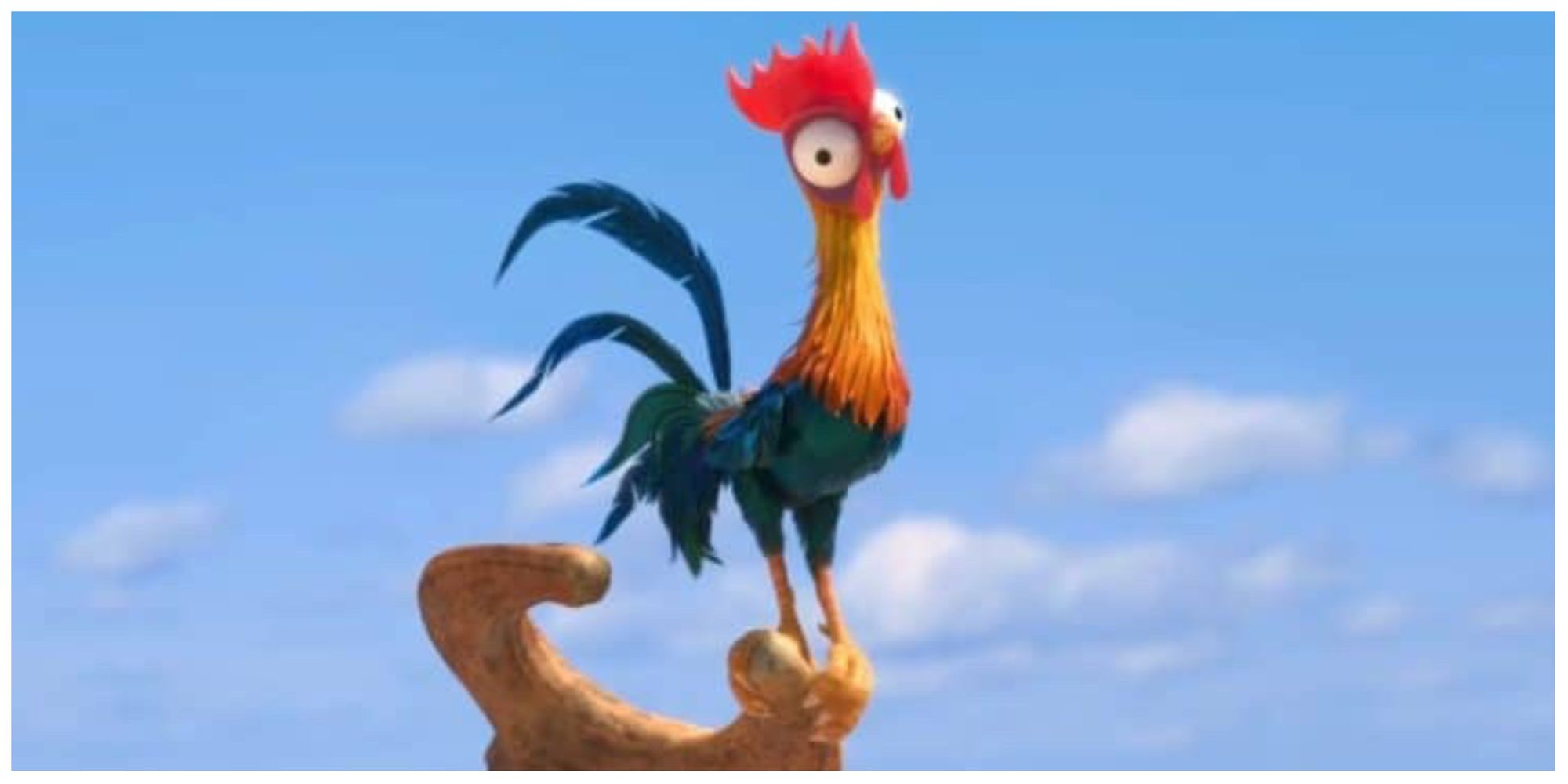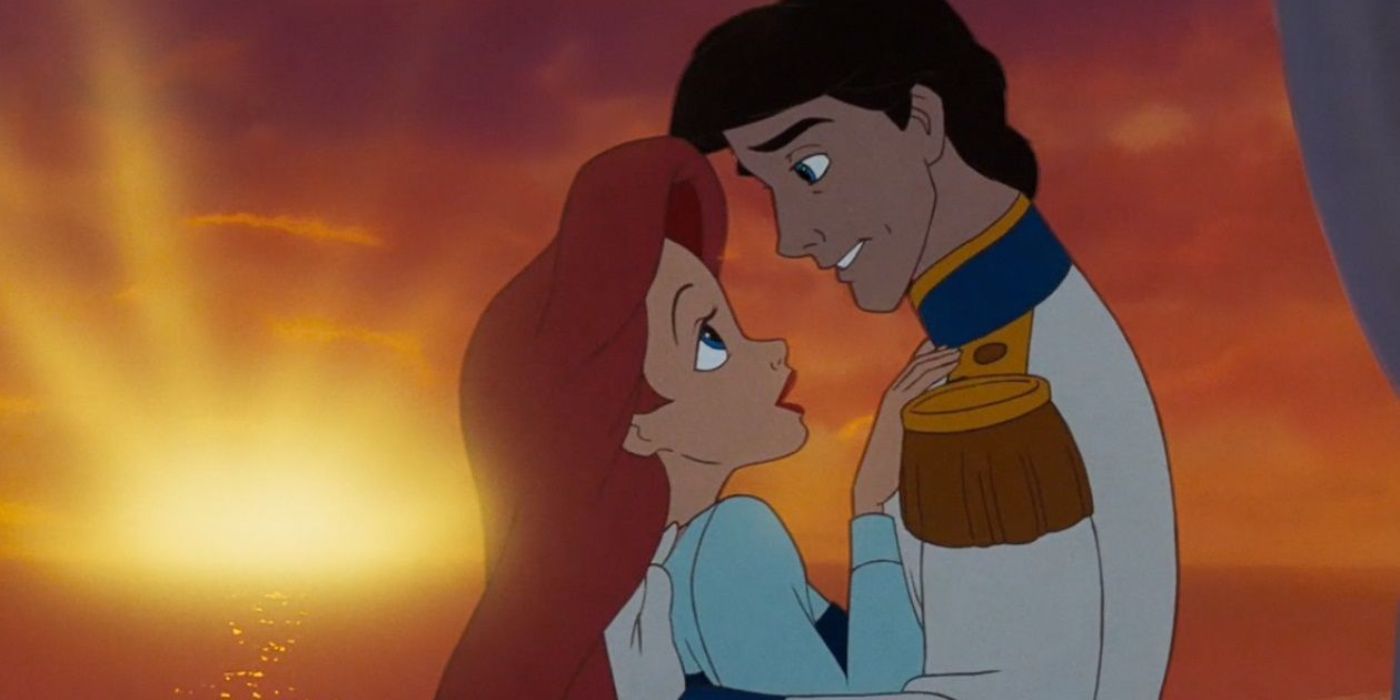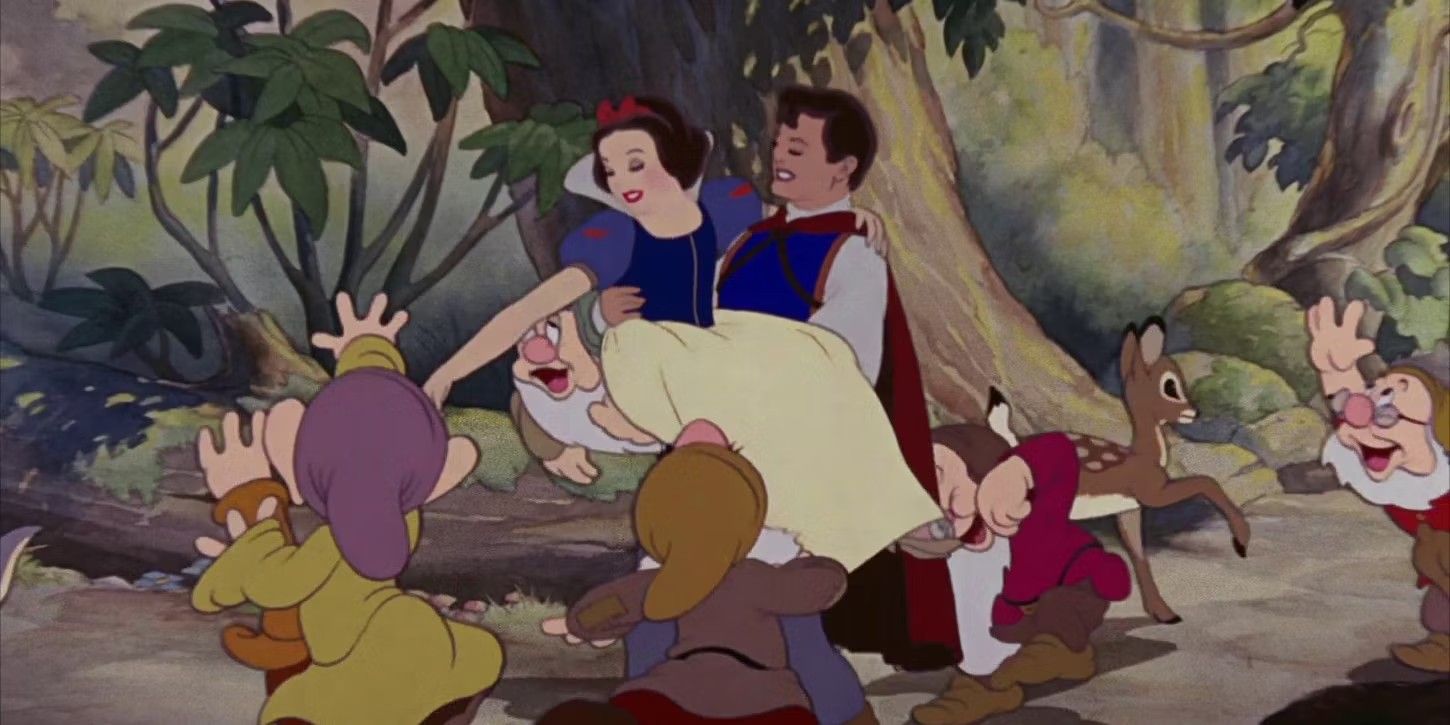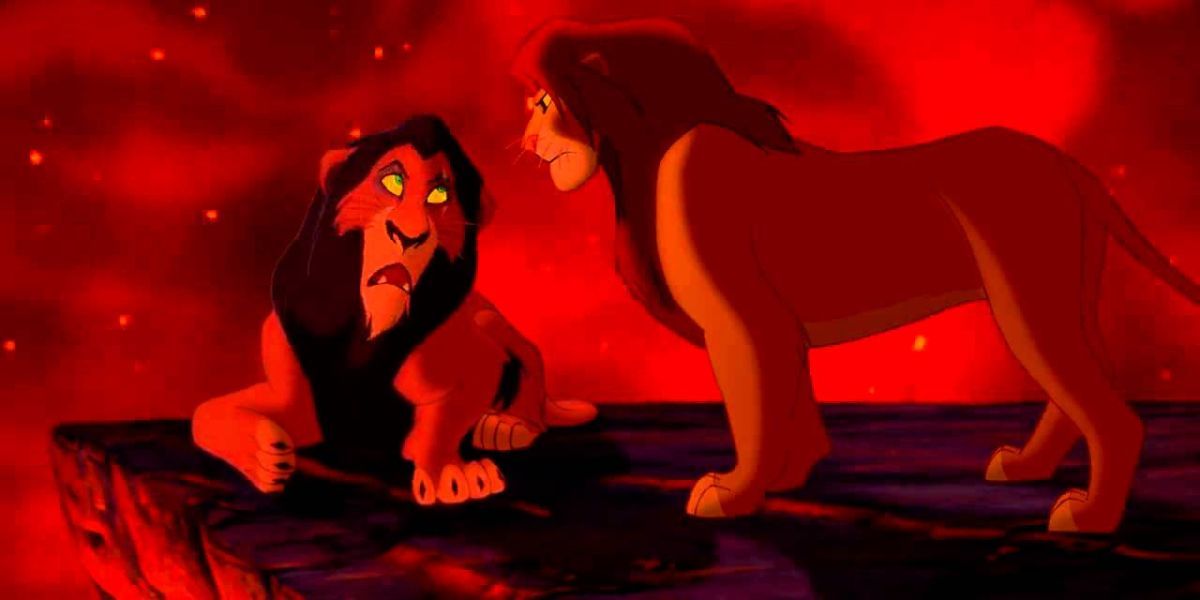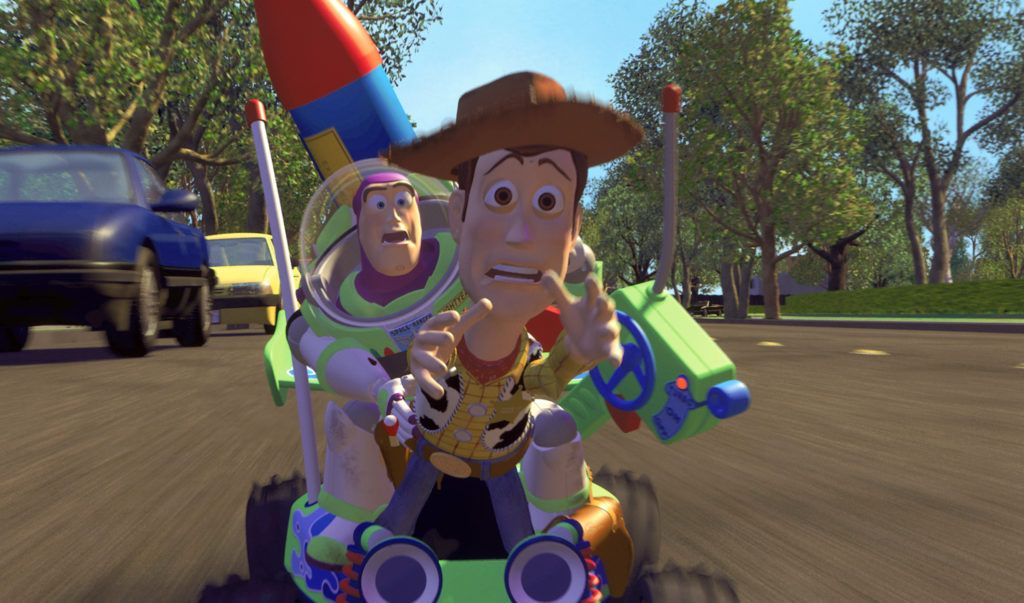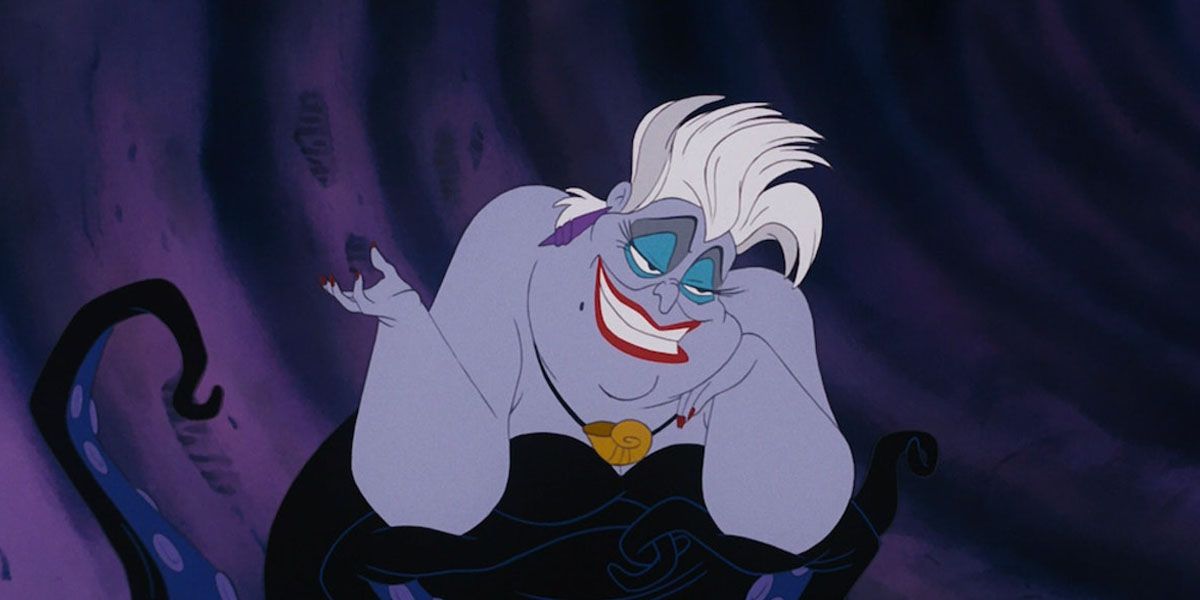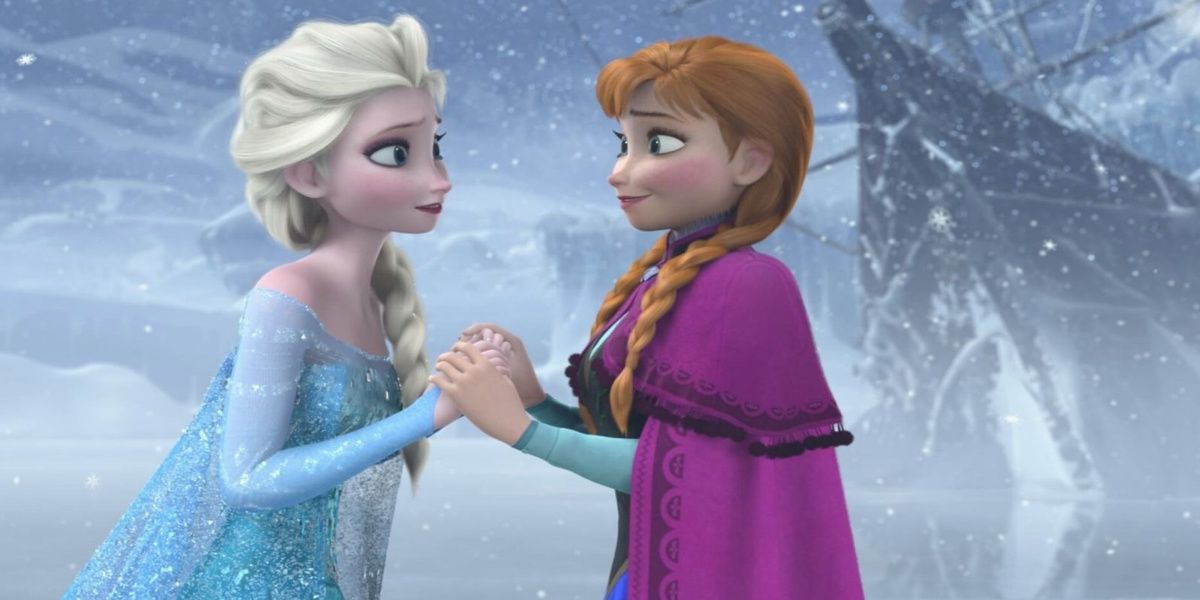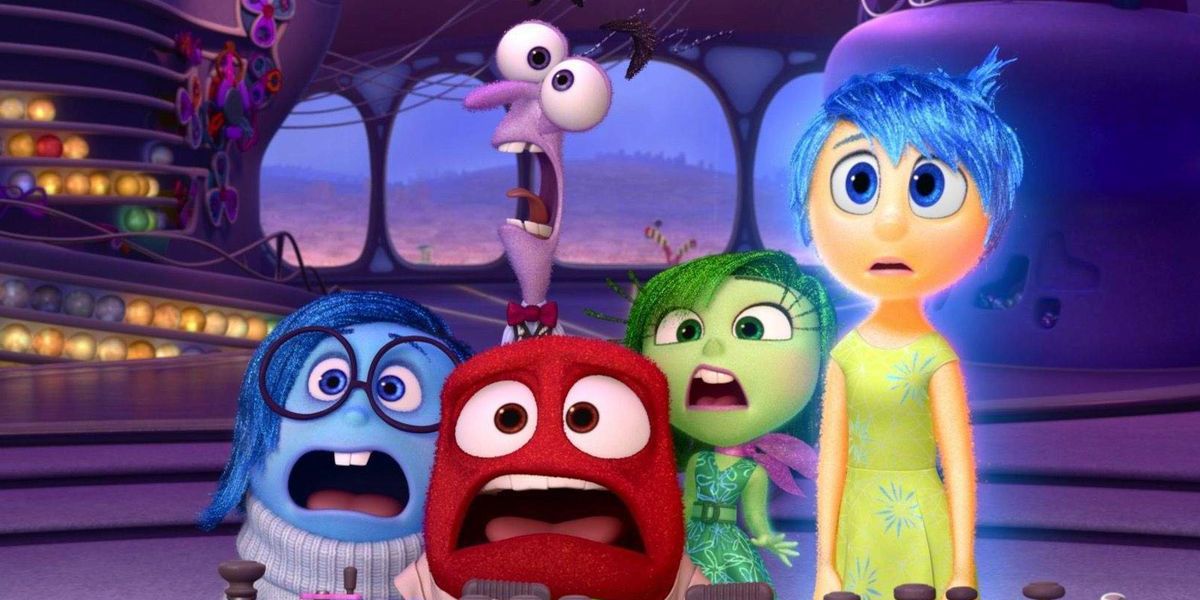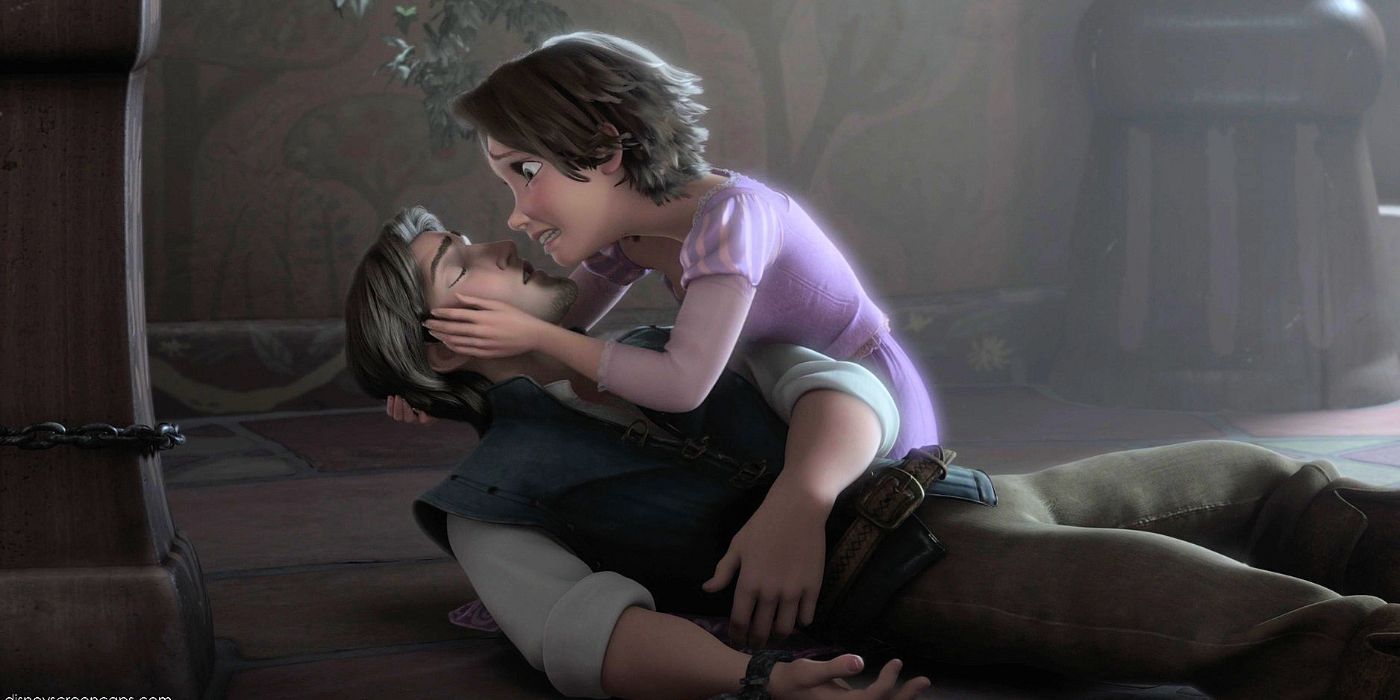Disney is one of the world's most prolific producers of family-friendly films, with classics like The Lion King or The Little Mermaid they're still watched decades later. Most people have seen at least a few Disney movies, and many grew up enchanted by the trademark Disney magic.
Although Disney films can be charming, they tend to be predictable. A lot of these movies follow an overused structure that starts with a damsel in distress and ends with a happily-ever-after. As much as audiences love these classic tales, they might find themselves rolling their eyes at some of Disney's overused tropes.
10 Love-At-First-Sight Feels Lazy
Even the most romantic viewer might have a tough time getting behind the cheesiness of the "love-at-first-sight" trope. It's an older fairy-tale concept that feels out of touch. Unfortunately, it's not uncommon in Disney films. Although one might expect this trope to fade as Disney modernizes, it's found even in 21st-century movies like Cars and Wall-E.
While it's a nice idea, love at first sight can feel like lazy writing. Often, a more drawn-out and complicated relationship between two characters is more compelling and less reliant on outward appearances.
9 Animal Sidekicks Are Great But Overdone
There's nothing wrong with a cute little animal sidekick, especially when they can spit out funny one-liners for comedic relief. Mulan's dragon, Mushu, is an example of a useful, fan-favorite animal sidekick.
While animal sidekicks can add to the fun and give main characters a convenient excuse to talk out loud, animal sidekicks start to feel tiresome when they show up in every story. When every hero has a cute pet iguana or pig, it seems like Disney is just trying to sell stuffed animals.
8 One-Dimensional Male Love Interests Are Boring
When movies are billed as romances, audiences typically want a bit of excitement and romantic tension. The will-they-won't-they or enemies-to-lovers dynamic is often what makes the movie so fun. These elements are often missing in older Disney movies, however, as the male love interest simply appears to be some guy with a great jaw and an underwhelming personality.
Prince Eric from The Little Mermaid or Prince Phillip from Sleeping Beauty are typical examples of this, and the movies' romances feel unremarkable as a result. For more compelling romantic stories, Disney needs interesting male love interests, and contemporary characters like Tangled's Flynn Rider and Frozen's Kristoff are examples of improvement in this area.
7 Damsels In Distress Are Outdated
Even more outdated than boring princes is the helpless princess trope. A damsel locked in a tower waiting for a man to save her is tedious and overdone. Luckily, Disney has drifted away from this, with recent movies like Moana featuring dynamic and powerful female characters who take hold of their destiny.
Plenty of older films fall into the weak princess trap, however. Tales like Hercules rely on the male lead saving a mostly helpless woman, and Snow White features a bored and unambitious girl waiting for her prince to come. As times change, this trope should change too, and women should be at the helm of their own stories.
6 Black And White Morality Is An Oversimplification
Too often, Disney films separate their characters into "good" and "evil," without exploring the complicated gray areas in between. "Right" and "wrong" aren't always so solid, and sometimes morality is open to interpretation. Although it's satisfying to see good triumph over evil, real life is rarely that simple.
It's typically more satisfying to viewers when morality is questioned but not defined, and characters have multiple sides to them. Villains like Mother Gothel or Scar are simply interested in everlasting youth or endless power, but with more nuance to their characters, they might make more interesting or even relatable antagonists.
5 Mediocre Sequels Feel Like Cheap Tricks
It feels like every time Disney has a successful project, they rush to make a sequel to capitalize on it. While there are a few good Disney sequels, they tend to weigh down their predecessor. The Toy Story franchise has 3 sequels and a spin-off, and its attempts to try to stretch the '90s hit over 30 years have had limited success.
There's nothing wrong with a sequel, but Disney tends to make secondary films that lack the same substance as the originals. Bringing back the characters and settings simply doesn't recreate the joy of the original movie.
4 The Idea That Beauty Equals Goodness Isn't Compelling
In many Disney films, the protagonists are painted as perfect-looking, beautiful creatures. Their beauty is often supposed to reflect an internal sense of goodness, while evil characters are given stereotypically "ugly" qualities. This concept is not only outdated, it can also enforce some seriously harmful beauty standards, especially for women.
In reality, being conventionally good-looking doesn't make someone virtuous. There are plenty of other sophisticated ways to distinguish a kind and noble character, without their appearance acting as the central indication. Characters should have to earn the title of "good", and shouldn't gain it simply from being beautiful.
3 Happily-Ever-After Isn't Always Realistic
It's nice to watch a feel-good Disney film where everything works out for the characters in the end, but it can feel cheap if it's not earned. Even when the characters fall in love and run away into the sunset together, they're still going to face plenty of conflict going forward.
Considering that audiences like neat and happy endings, it doesn't seem like happily-ever-after is vanishing any time soon. While these types of endings aren't inherently problematic, it would be nice for Disney to acknowledge that life's complications don't always wrap up with a perfect kiss or a frolic through a meadow.
2 Running Gags Get Old
When a joke gets a laugh, it's easy to repeat it throughout the whole movie to try and make the audience chuckle again and again...without writing any new jokes. Modern Disney movies that take a more comedic approach tend to lean on gags a little more. Movies like Inside Out are full of them.
To tidy up this trope, it might be better to use a joke once or twice, instead of driving it into the ground until it loses its comedic effect. Less is more, and with some subtlety, running gags don't have to disappear completely.
1 The Power Of Love Is Lackluster Writing
Love is an undeniably powerful force, but sometimes it can serve as an easy fix when the plot needs to be resolved in a tight two hours. When characters break a curse or defeat a villain with nothing but "the power of love," it can feel both cheesy and lazy. While the power of love isn't a terrible concept, even kids like it when logic and characterization drive the plot.
The "power of love" trope seems to be one of the most durable of the Disney franchise, with movies both old and new employing it to wrap up their plots. If the power of love could make more of our problems disappear in real life, we might buy into it a little more.

